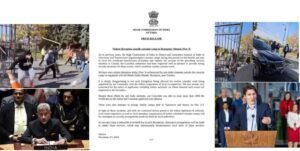
Sunita Williams extended space mission health challenges
Sunita Williams, a seasoned NASA astronaut, has been aboard the International Space Station (ISS) since June 2024. Originally scheduled for a brief mission, her stay extended due to technical issues with Boeing’s Starliner spacecraft. This prolonged exposure to microgravity presents significant health challenges, particularly concerning muscle atrophy and bone density loss.
Muscle Atrophy in Microgravity
In the absence of Earth’s gravitational pull, muscles, especially those supporting posture, experience reduced workload. This reduction leads to muscle weakening and atrophy. Astronauts can lose up to 20% of their muscle mass within two weeks of space travel, increasing to 30% over several months. This decline affects physical performance and overall health. To combat this, astronauts engage in daily exercise routines designed to maintain muscle strength. However, despite these efforts, some muscle loss remains inevitable.

Bone Density Reduction
Microgravity also impacts skeletal health. Without the need to support body weight, bones undergo demineralization, leading to density loss. Astronauts may lose approximately 1-2% of their bone mass each month, particularly in weight-bearing bones like the spine, hips, and legs. Over a six-month mission, this can result in a 10% reduction in bone density, increasing fracture risk. Recovery of bone mass upon returning to Earth can take years. Preventative measures include resistance exercises and nutritional strategies, yet they cannot fully counteract the effects of prolonged weightlessness.
Fluid Redistribution and Its Effects
The microgravity environment causes bodily fluids to shift towards the head, leading to facial puffiness and nasal congestion. This fluid shift can also increase intracranial pressure, potentially affecting vision—a condition known as Spaceflight-Associated Neuro-ocular Syndrome (SANS). These changes pose challenges to both comfort and health during extended missions.
Radiation Exposure
Beyond Earth’s protective atmosphere, astronauts are exposed to higher levels of cosmic radiation. Prolonged exposure increases the risk of radiation-induced health issues, including cancer and acute radiation sickness. NASA closely monitors radiation levels and employs shielding strategies to mitigate exposure, but the risk cannot be entirely eliminated.
Psychological Challenges
Extended missions in confined spaces, coupled with isolation from Earth, can lead to psychological stress. Feelings of isolation, anxiety, and depression are potential concerns. NASA provides support through regular communication with loved ones and access to behavioral health resources to help astronauts manage these challenges.

Reacclimation to Earth’s Gravity
Upon return, astronauts face the challenge of readjusting to Earth’s gravity. Muscle weakness and reduced bone density can make movements like walking and standing difficult. Sunita Williams noted, “I’ve been up here long enough, right now I’ve been trying to remember what it’s like to walk.” Rehabilitation programs are essential to help returning astronauts regain strength and adapt to gravitational forces.
Conclusion
extended underscores the resilience required for long-duration spaceflight. While technological advancements address many challenges, the human body still faces significant hurdles during prolonged exposure to microgravity. Ongoing research aims to develop better countermeasures to ensure the health and safety of astronauts on future missions.









Add comment